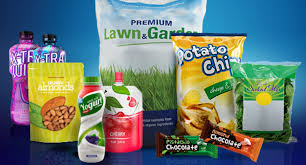The label industry is in a unique position as we enter the second half of the decade.
It’s a time when the global economy is in the middle of a lengthy period of uncertainty. Even discounting the many headline-making geopolitical issues facing the world, complex industry-specific regulations are having a profound impact on the market, creating a requirement for businesses to stay up-to-date with the latest compliance needs.
However, labels are an essential item that virtually every other industry relies on, meaning converters can turn these challenges into opportunities by balancing cost efficiency with their sustainability goals.
As the gold standard in label press performance, BOBST takes its role as an industry expert seriously when collaborating with converters and innovating alongside partners to drive the industry forward.
To provide insights in these turbulent times, we spoke with industry experts Jonathan Sexton, Marketing Manager Energy Curing Products, Europe, at Sun Chemical, and Angelo Monaco, Prepress, Workflow and Quality Product Manager, at BOBST, who offer their valuable perspectives on the path towards a more environmentally responsible label market.
Solving industry challenges with innovation
Some of the biggest challenges and opportunities lie in managing the impact of printing inks and coatings on recycling processes and ensuring compliance with new regulatory frameworks like the Packaging and Packaging Waste Regulation (PPWR) in Europe . Innovations that help enhance the quality of recovered materials could improve recycling rates. “Sun Chemical has developed a range of inks designed to either stay on or wash off labels during the washing stage of the recycling process,” says Jonathan Sexton. “These include both UV and UV-LED options designed to work without the use of a primer.”
Other developments include renewable material-based ink and coating products, as well as monoweb solutions that replace laminations, reducing material use and overall printing complexity. This could help support cost-effectiveness by reducing waste from label production, such as adhesives and laminates. It could also affect recyclability, facilitating closer collaboration with waste management facilities and creating opportunities for innovation in compostable films and recycled-content substrates.
Another key opportunity is UV LED curing, which reduces energy consumption. BOBST and Sun Chemical have collaborated to explore how they can support label converters in this difficult landscape. Sexton adds: “Sun Chemical is developing new-generation solutions to help label converters transition to UV LED printing, reducing energy consumption while improving efficiency.”
When considering these innovations along with digital printing and workflow automation, converters have more options than ever to reduce waste, energy consumption, and material use across their operations.Angelo Monaco adds the BOBST view of the label industry, saying: “We support sustainability through innovative technologies and responsible production. By working closely with industry partners, we test and introduce new solutions, integrating digitalized workflows to reduce waste and press downtime while maximizing profitability.”
Focusing on innovative solutions
Sustainability is important – but so is quality, which remains the main priority for converters. Sun Chemical and BOBST agree that a sustainability-focused approach does not have to compromise print and application performance in order to deliver environmental benefits. The quality of UV LED printing has been enhanced over time as specialized inks and new machinery innovations have entered the market. Results achieved with high renewable content products, such as SunVisto AquaGreen water-based inks are exceptional on-press and in-application, exceeding the performance of conventional products for some substrates and applications.
With improved and automated quality control, automation, and digitalization on its side, BOBST provides all the features converters need to ensure minimal waste while meeting the highest standards in quality demands.
Vision for the future
Sun Chemical and BOBST share a common vision of a sustainable future, and a drive to make it a reality in the coming years. “Sun Chemical prides itself on being a leader in sustainable ink technologies for label printing,” Sexton says, adding: “This means developing solutions to meet evolving technical requirements driven by Design for Recycling and continually reducing our products’ environmental impact. This will enable labels to meet increasingly ambitious regional recycling targets and continue to be an attractive decoration and communication technology for products and packaging in the future.”
On the machine manufacturers’ side, BOBST envisions a circular future for the label supply chain, driven by market awareness, new technologies, and cost-effective materials. As demand shifts to smaller, more frequent print runs, BOBST automation and workflow solutions enhance responsiveness and flexibility. Angelo Monaco says: “Smart labels like RFID, NFC, and QR codes will optimize supply chains, reduce waste, and improve traceability for recycling. Our performance monitoring systems ensure process optimization, minimizing downtime for greater sustainability and profitability.”
Achieving sustainability goals in the label market requires collaboration across the entire supply chain. No single entity can drive sustainability alone – press manufacturers, material suppliers, brand owners, converters, and recyclers must work together to create a more circular and efficient system.
How to practically implement sustainable approaches in your company
Sun Chemical employs a comprehensive sustainability approach that covers three key pillars: Operations, Products, and Collaborations.
1. Optimize operations by improving efficiency, reducing energy use, and minimizing waste
2. Design products or enable end-use packaging designs with a lower carbon footprint, incorporating renewable materials, allowing lightweighting, and offering inks, coatings and laminating adhesives that support circularity
3. Foster collaborations with innovative suppliers and industry associations to stay ahead of sustainability trends and standards
Working with suppliers on lower-impact alternatives like LED inks and thinner plastic films, making use of digital systems for monitoring performance to boost efficiency, and end-to-end solutions can all contribute to more streamlined operations and reduced waste.
Additionally, the use of smart labels incorporating RFID, NFC, and QR code technology can help optimize supply chains, reduce product waste, and provide traceability for more efficient recycling and reuse. To support converters in meeting market demand for smart labels, BOBST has the technology and expertise to optimize machine uptime using performance and consumption monitoring systems and advanced automation systems. This is how converters can ensure healthier profit margins and a healthier planet with each press run.





